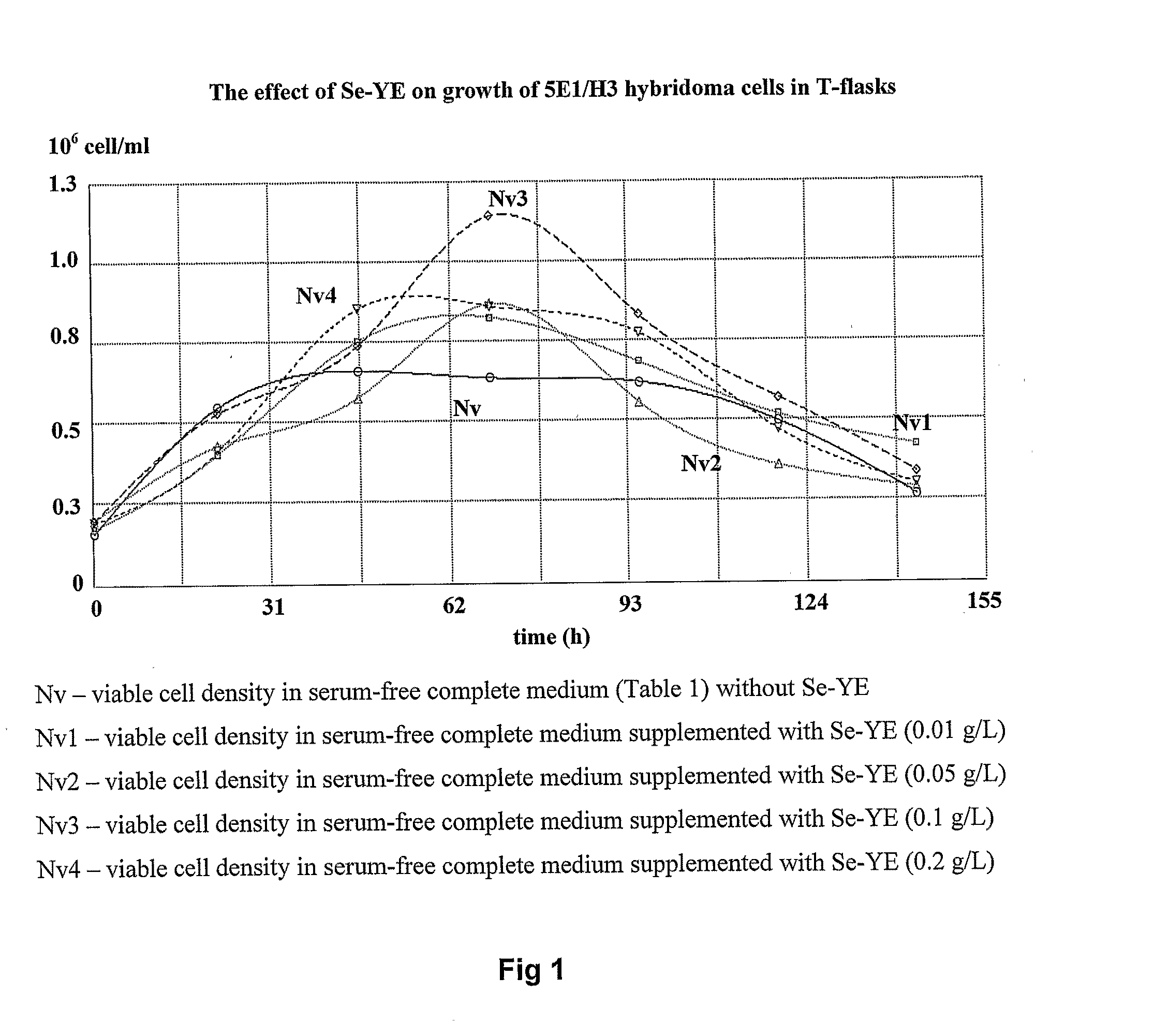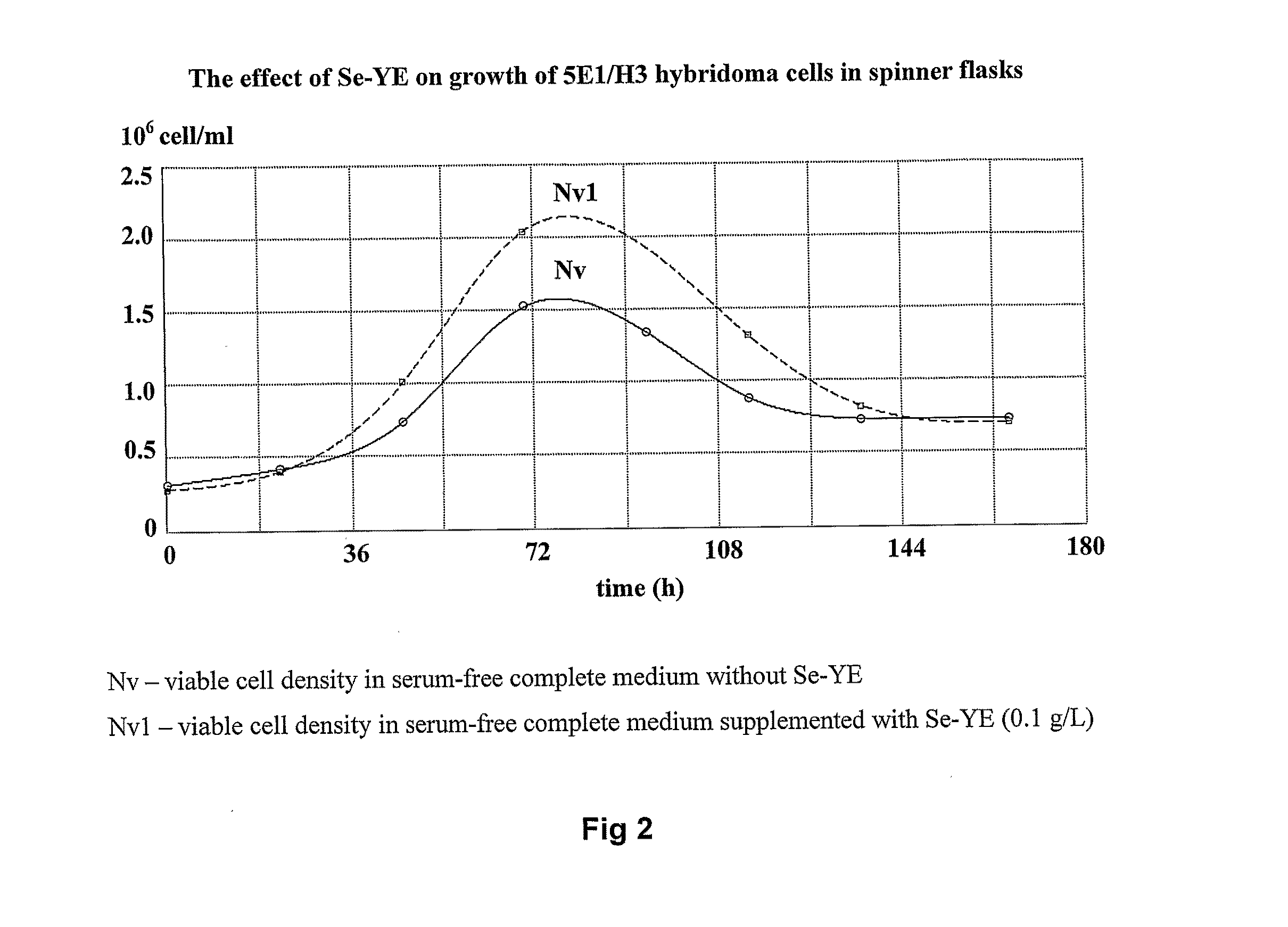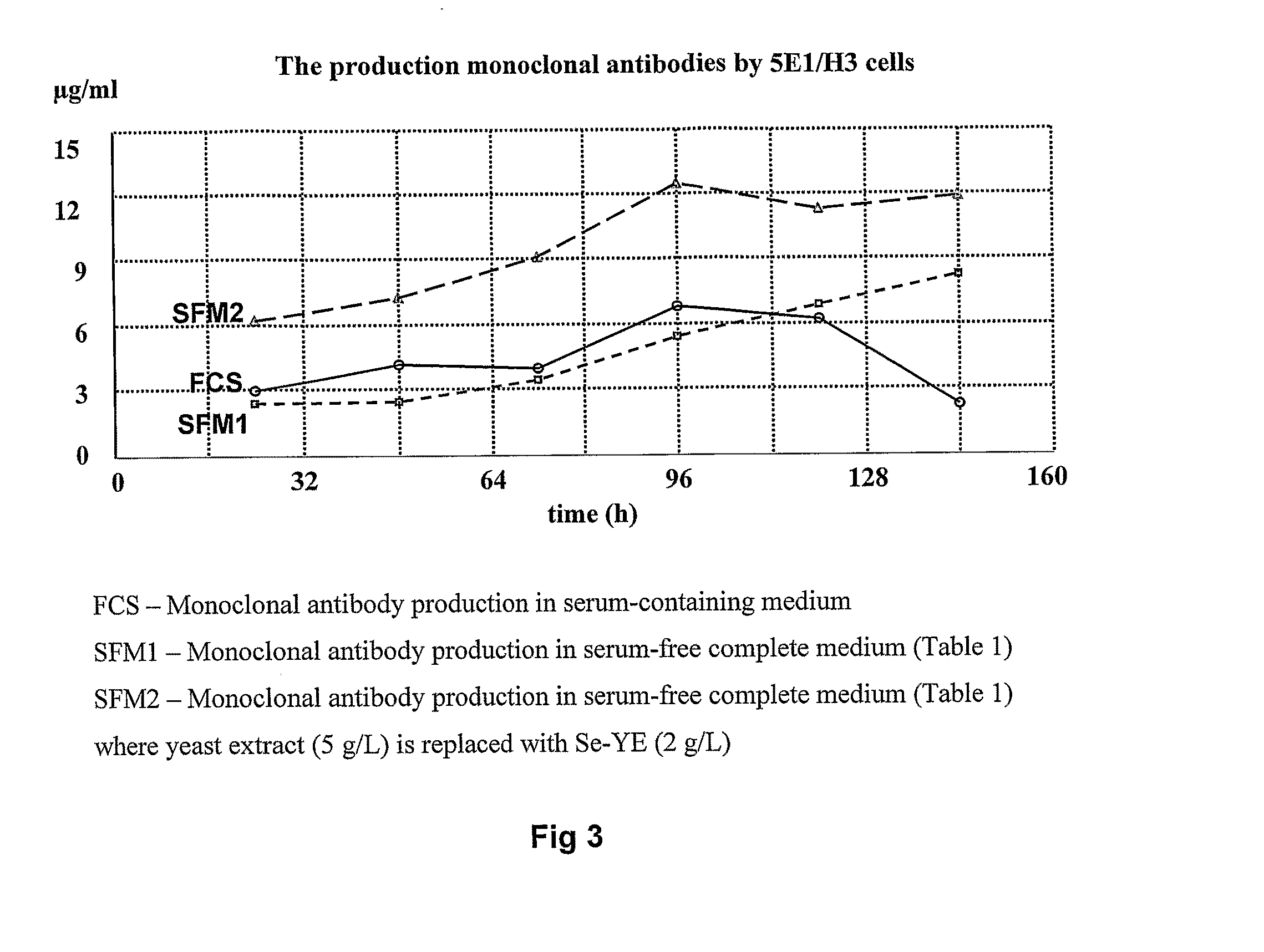Use of extract of selenium-enriched yeast (se-ye) in mammalian cell culture media formulations
a technology of selenium-enriched yeast and which is applied in the field of mammalian cell culture media and in vitro cultivation of mammalian cells, can solve the problems of bse, human or animal prions, and health risks of cell therapy and other clinical applications, and achieves the effect of increasing the nutritional ability of serum-free medium, facilitating cell growth, and facilitating cell growth
- Summary
- Abstract
- Description
- Claims
- Application Information
AI Technical Summary
Benefits of technology
Problems solved by technology
Method used
Image
Examples
Embodiment Construction
Materials and Methods
[0056]5E1 / H3 hybridoma cells (Hunt et al., 2007) and CHO cells (Gibco) were cultivated in T-flasks (10 ml), shaker flasks (10 ml) or in spinner flasks (Techne) (50 ml) at 37° C. in CO2 (5%) incubator. 5E1 / H3 cells were routinely cultivated on serum-free complete medium for hybridoma cells given in Table 1. CHO cells were routinely cultivated on serum-free complete medium for CHO cells given in Table 2. To study the effect of Se-YE on growth of 5E1 / H3 and CHO cells, Se-YE at different concentrations was added to above-mentioned complete serum-free media. Viable cell density was measured by hemocytometer and culture viability determined by Trypan Blue exclusion test. Monoclonal antibody (MAb) production by hybridomas was determined by enzyme linked immunosorbent assay (ELISA).
TABLE 1Composition of serum-free completemedium for 5E1 / H3 hybridoma cellsConcentrationCompanyComponentBasal medium DMEM / F12According toSigma Product nr. D0547(1:1), with 1-glutamine,producer...
PUM
| Property | Measurement | Unit |
|---|---|---|
| density | aaaaa | aaaaa |
| concentration | aaaaa | aaaaa |
| size | aaaaa | aaaaa |
Abstract
Description
Claims
Application Information
 Login to View More
Login to View More - R&D
- Intellectual Property
- Life Sciences
- Materials
- Tech Scout
- Unparalleled Data Quality
- Higher Quality Content
- 60% Fewer Hallucinations
Browse by: Latest US Patents, China's latest patents, Technical Efficacy Thesaurus, Application Domain, Technology Topic, Popular Technical Reports.
© 2025 PatSnap. All rights reserved.Legal|Privacy policy|Modern Slavery Act Transparency Statement|Sitemap|About US| Contact US: help@patsnap.com



